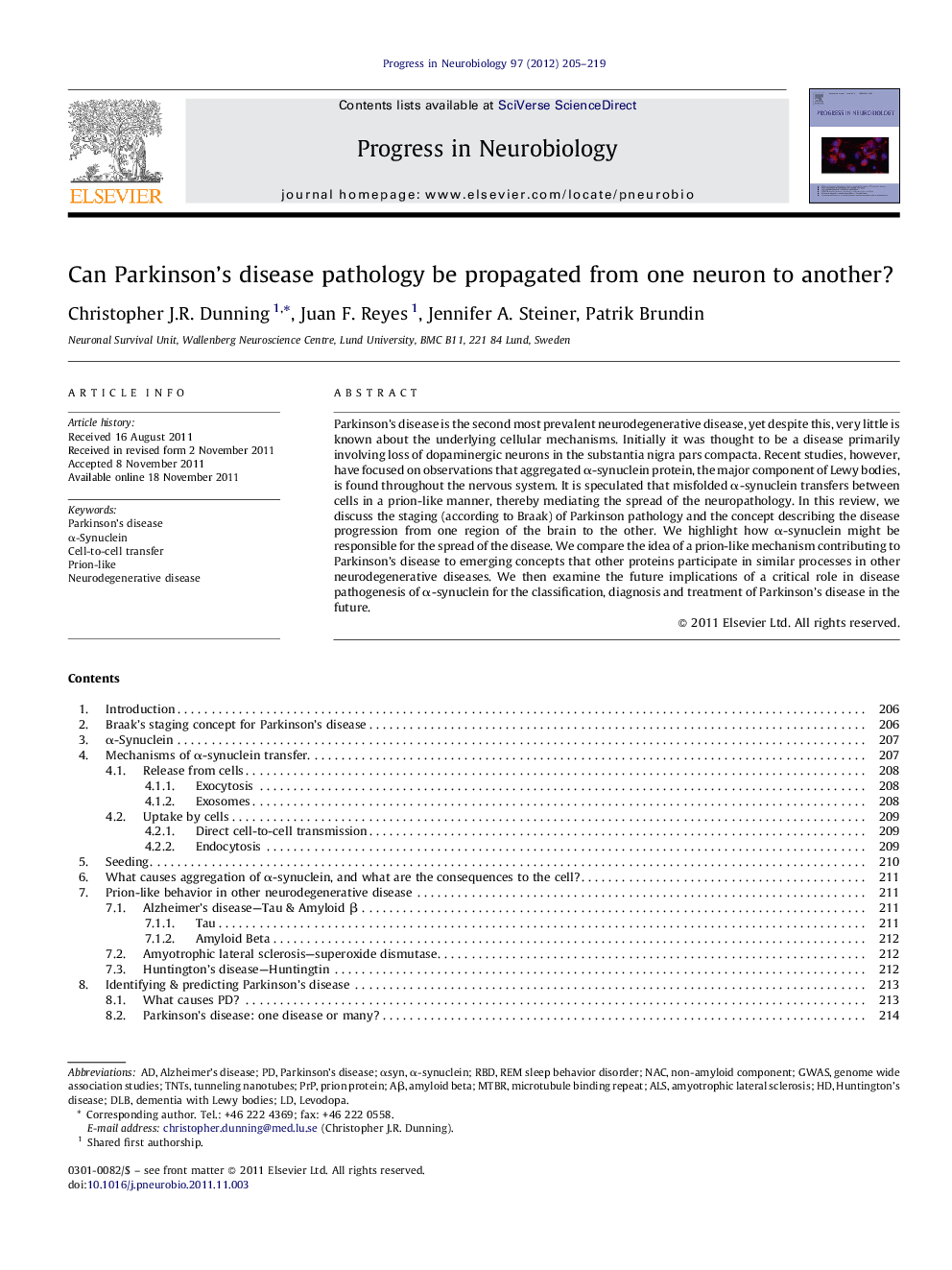| Article ID | Journal | Published Year | Pages | File Type |
|---|---|---|---|---|
| 6286601 | Progress in Neurobiology | 2012 | 15 Pages |
Parkinson's disease is the second most prevalent neurodegenerative disease, yet despite this, very little is known about the underlying cellular mechanisms. Initially it was thought to be a disease primarily involving loss of dopaminergic neurons in the substantia nigra pars compacta. Recent studies, however, have focused on observations that aggregated α-synuclein protein, the major component of Lewy bodies, is found throughout the nervous system. It is speculated that misfolded α-synuclein transfers between cells in a prion-like manner, thereby mediating the spread of the neuropathology. In this review, we discuss the staging (according to Braak) of Parkinson pathology and the concept describing the disease progression from one region of the brain to the other. We highlight how α-synuclein might be responsible for the spread of the disease. We compare the idea of a prion-like mechanism contributing to Parkinson's disease to emerging concepts that other proteins participate in similar processes in other neurodegenerative diseases. We then examine the future implications of a critical role in disease pathogenesis of α-synuclein for the classification, diagnosis and treatment of Parkinson's disease in the future.
⺠We provide an overview of Braak's staging hypothesis in Parkinson's disease. ⺠Discuss the literature surrounding the prion-like spread of α-synuclein. ⺠Highlight current and future research surrounding diagnostics and therapies.
